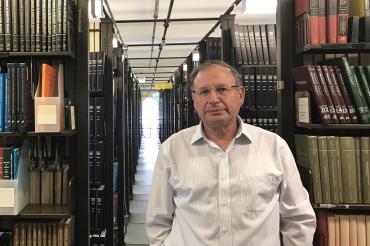U of T team develops the first smartphone visual field test

Published: May 11, 2018
A University of Toronto team led by Professor Moshe Eizenman has developed a simple, inexpensive way for people to test their own vision for early signs of glaucoma.
Using a smartphone and a $25 virtual reality device called Google Cardboard, patients can quickly and easily monitor their peripheral vision for free, rather than visiting a clinic.
This is especially important in areas in Asia, India, Nepal and West Africa, where 90 per cent of all glaucoma goes undetected, and is typically only discovered after it causes permanent vision damage, says Eizenman, a professor in the Faculty of Medicine's department of ophthalmology and vision sciences and the Institute of Biomaterials and Biomedical Engineering.
“Visual field testing on personal smartphones can enable vision screening in developing countries where access to expensive equipment and dedicated testing facilities is limited,” he says. “This is crucial in remote areas where travel time to central testing facilities is prohibitively long or expensive.”
Working with Bill Shi, a third-year engineering student at U of T, and Yvonne Buys and Graham Trope, both professors of opthamology, the team tested 19 patients using both the mobile device and a traditional visual field testing instrument. The results between the two testing methods showed good agreement.
Eizenman also predicts his invention could help improve the management of open-angle glaucoma, where frequent testing is recommended. Despite the potential benefits of frequent testing, patients with glaucoma are usually elderly and have a hard time following through.
Eizenman presented his findings at the 2018 Annual Meeting of the Association for Research in Vision and Ophthalmology last week.
The next step is for Eizenman and his team to test the utility of their visual field testing technology in parts of the world where glaucoma goes undetected, starting with India and Nepal.

